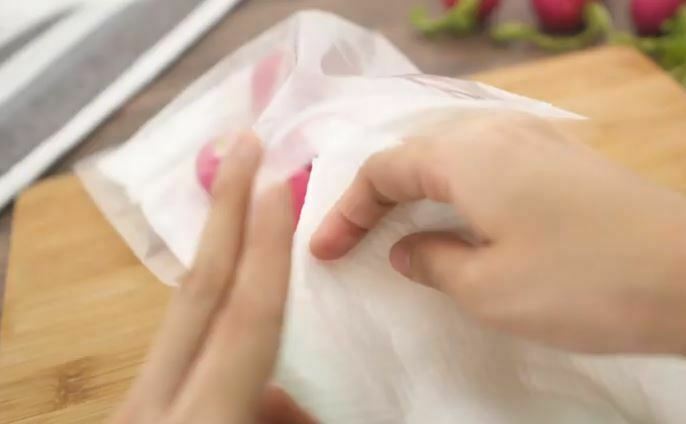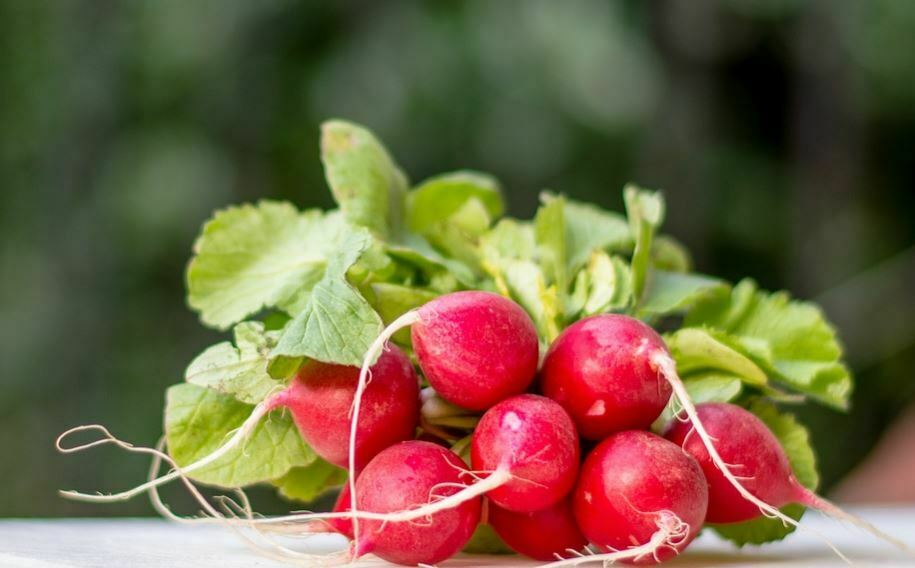Suppose you are looking for ways to keep your radishes fresh for as long as possible, then you must learn how to store them properly. Keeping radishes fresh isn’t complicated, but it does require a few tips and tricks, luckily you have come to the right place because we’ll be sharing everything we know about how to keep radishes fresh with you.
Radishes are great to have around; they make great recipe additions and have tons of health benefits. But let’s rewind for a bit and get back to the moment you get home from the grocery with your fresh veggies. By providing the right conditions and environment, you can certainly get the most out of your radish so keep your eyes peel for all the steps and tricks to keep your radishes fresh.
Though it may sound intimidating, especially if you are new to storing veggies, you have nothing to worry about. With this guide, you won’t be wasting any of your radishes and will be able to learn step by step how to keep radishes fresh. After some practice, you’ll be doing it like the pros!
FAQ’s
Do radishes stay fresh for long?
Like many other vegetables, radishes won’t stay fresh and crunchy for a long period of time.
How can you make radishes stay fresh longer?
You need to choose a storage method, such as hydro-cooling or sealing your radishes in a plastic bag. This way, you’ll be able to put away your vegetables and make them last longer.
How to know if the radishes are going bad?
If the leaves of the radishes are turning brown or becoming limp, they’re going bad. If they’re mushy instead of hard, they probably aren’t fresh anymore.
Why is moisture bad for radishes?
Excess moisture causes vegetables to go bad faster, meaning your washed radishes might expire several days or a week before your unwashed ones.
How to keep radishes fresh
There are different ways to keep radishes fresh; it all depends on whether you are looking for short-term or long-term storage. We’ll be covering all the options below.

Hydro-cooling
This method works best for short-term storage, in other words, if you are planning to consume your radishes in the next few days.
- Fill a large bowl with 1–2 inches of cool water.
- Make sure your bowl is big enough to hold all of your radishes
- Spread out the radishes in the water so that it looks as if they’re growing out of it
- Place the radishes in the water for up to 3 days at room temperature
- Transfer the bowl to the refrigerator for 5-8 days.
Tips
- To use this method, The radishes should be whole, no need to trim the ends.
- Each radish should be partly submerged in the water with the roots at the bottom, and they should be placed evenly.
- If you place the bowl in the fridge, you’ll be able to keep your radishes for a few more days. It will help delay wilting, and the radishes should last 5-8 days in the fridge.
Plastic bags
This method allows for fresh radishes for up to two weeks.
- Using a knife or scissors, remove the leafy tops and roots off of the radishes
- Wash your radishes but know they won’t last as long as unwashed radishes
- Layer your plastic bag in dampened paper towels at the bottom
- Place the radishes inside the plastic bag
- Cover the radishes with another damp paper towel on top
- Seal the bag and remove excess air
- Store the bag of radishes in the refrigerator for 1-2 weeks
Tips
- Cutting the tops and roots is essential otherwise, the leafy top will draw water from the root, and the radish will dry out.
- If you don’t have paper towels, you can use a clean cloth or tissue instead. This is important because the radishes don’t have their roots anymore, so the dampened towels will help retain their fresh quality.
- When placing your radishes bag in the fridge, look for a cool, dark spot such as the crisper compartment.
Canning Jar
By using this method, you’ll have fresh radishes for up to 8 days.
- Wash your radishes with clean water to remove all of the dirt
- Using scissors or a knife, cut off the roots and leafy tops of the radishes
- Use a canning jar and pour the radishes
- Once your radishes are layered on top of one another, fill the jar with clean water.
- Put the lid on the jar, making sure that it’s properly sealed
- Place the jar in the fridge
Tips
- Make sure your jar is large enough to hold all of your radishes
How to keep radishes fresh in a Basement/Cellar
By employing the method, you’ll have fresh radishes for up to three months.
- Fill a box with damp sand.
- Find a spot and place the box in your basement or cellar
- Place unwashed radishes in the box of sand
- Tape a note to the box with the date
- Radishes submerged in the damp sand should stay fresh for months.
Tips
- To make the sand moist, spray it with water using a hose or spray bottle.
- The sand should be damp, not soaked. If you’re finding it hard to move the sand around with your fingers and feel very clumpy, it’s too wet. This is important because the damp sand will ensure fresh radishes.
- When spreading your radishes in the sand, make sure none of the roots are touching each other to prevent rot from spreading.
- Check your radishes at least once a week to make sure none of them are rotting or molding.
- If one of the radishes has gone bad, simply remove it from the sand so that the mold or rot doesn’t spread.
- The right conditions to keep radishes in your basement or cellar should be between 34 and 42 degrees F, with high humidity (90 to 95 percent).
Freezer
Frozen radishes can last for up to six months.
- Using cold water, rinse your radishes thoroughly
- Get rid of the top greens and the bottom taproot
- Cut them into smaller pieces ready for freezing
- Blanch the cut pieces in boiling water for 2-3 minutes
- Pour the sliced radishes in ice-cold water and then drain
- Transfer the radish slices into freezer bags
- Store the bags in the freezer
Tips
- Blanching is required to help maintain color, texture, and flavor.
- Since the roots have high water content, they may taste different from fresh ones when frozen.
- The change in texture occurs because the water in the roots freezes into ice when stored in the freezer.
- This method is highly recommended for cut radishes because you don’t want whole radishes with a hard outer skin that will split open and cause major changes to their texture.

